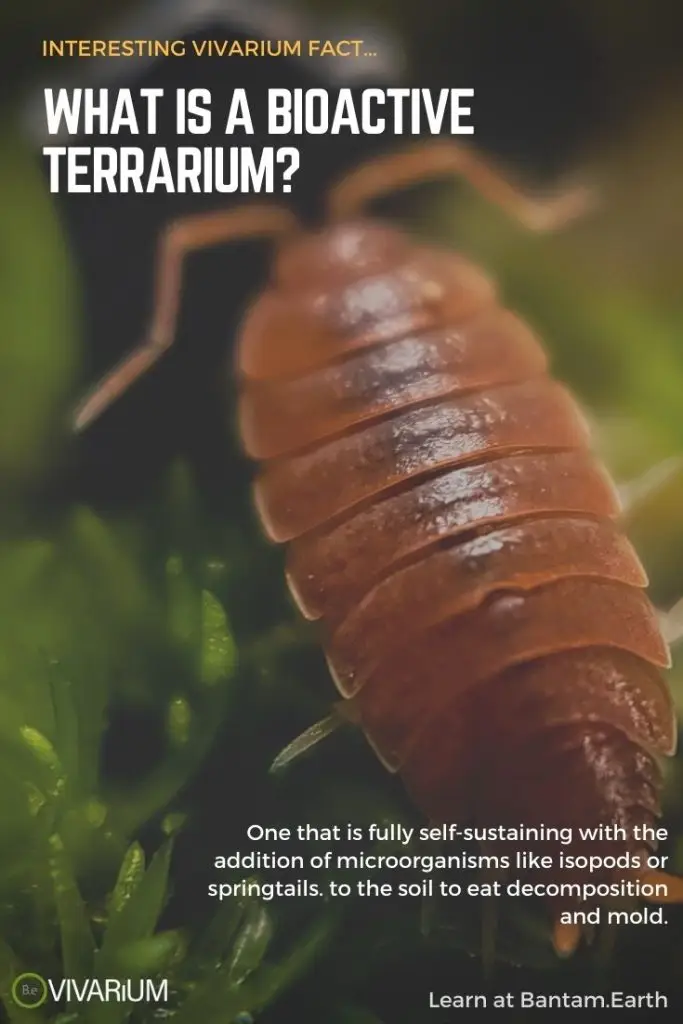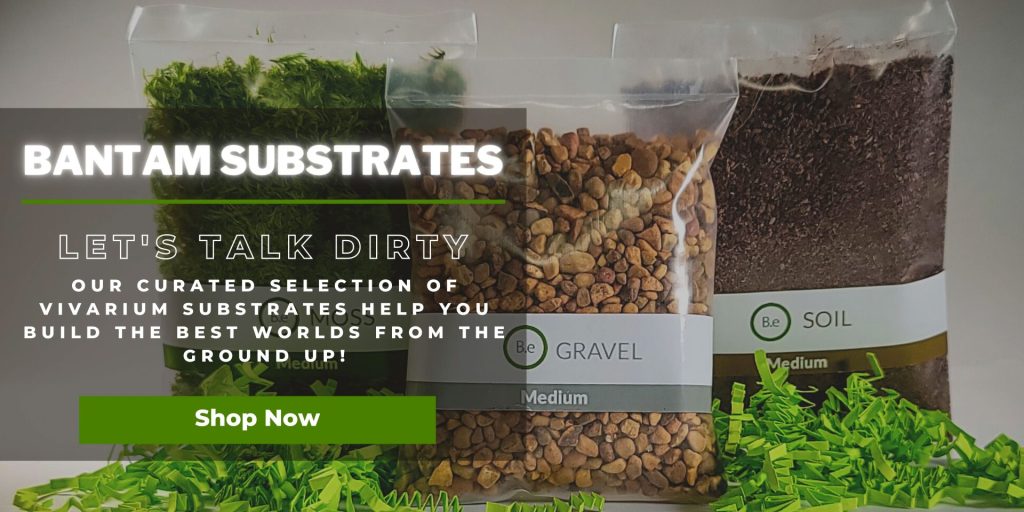Welcome to the wonderful world of terrariums! For those of us who love the idea of creating a miniature oasis, the right terrarium soil is essential.
From providing a habitat for beneficial bacteria to retaining water and nutrients. Terrarium soil is undoubtedly a key element of any successful terrarium substrate.
In this article, we’ll explore why soil is important, the types of soil available, how to prepare and maintain it, and a lot more. So, let’s get started!
Table Of Contents:
ToggleWhat Is Terrarium Soil?
Terrarium soil is a special type of soil mix specifically designed for terrariums. It is usually composed of a blend of organic as well as inorganic components. The purpose of the soil is to provide the optimal environment for plants and microorganisms to thrive.
It can also be augmented with additional ingredients to provide more nutrients and improve the structure of the soil, depending on the terrarium’s particular needs.
Benefits Of Using Terrarium Soil
Terrarium soil is used for a variety of reasons. It helps to stabilize the terrarium, providing a strong base for plants and other elements. Soil also provides a habitat for beneficial microorganisms, which help to break down organic matter and create a healthy ecosystem.
It can retain water, which helps to promote healthy plant growth. It can also hold onto nutrients, allowing them to be absorbed by plants and microorganisms.
Best Types Of Terrarium Soils
Terrarium soils come in a variety of types, each of which is customized to your specific needs. Loam is a basic mix that works well for most terrariums, while potting soil is a pre-bought mix that can be found in most garden supply stores.
Native soil, which can be found outside, is ideal for terrariums that need a more natural look, while DIY terrarium soils provide a great opportunity to customize your terrarium to fit your needs.
Forest, desert, and bog mixes are just some of the options available for those looking to craft their own terrarium soil. I will go into a little more detail about each one.
Loam Soil (Basic Mix)
Loam is a basic mix of soil that is often used for most terrariums. It is made up of an equal combination of sand, silt, and clay, and is usually a light brown color. I typically use coconut coir peat in place of silt.
Loam is known for its basic ability to retain water and some nutrients. It is also able to provide a stable environment for plants and beneficial microorganisms.
Potting Soil (Pre Bought Mix)
Potting soil is a pre-bought mix that is available in most garden supply stores. It is made up of a combination of peat moss, perlite, and vermiculite. It is often combined with slow-release fertilizers to provide nutrients for plants.
This option of soil is not typically recommended though for the fact your terrarium may or may not benefit from all added ingredients these typically come with.
Native Soil (Found Outside)
Native soil is found outside and is ideal for terrariums that need to have a natural look. It is made up of the soil found in your local area and is usually very nutrient-rich. If you are looking to create a natural-looking terrarium, native soil is a great option.
This is another option that isn’t typically recommended since it’s the most likely way to welcome pests into your setup.
DIY Terrarium Soil
DIY terrarium soils are the best option for those looking to customize their terrariums to fit their specific needs. They are made up of different combinations of soil and other ingredients, such as perlite, vermiculite, and peat moss.
They can be strategically designed to provide the right environment for the plants and microorganisms that live in the terrarium. DIY soil mixes can be modified for use in any type of terrarium, from forests to deserts to bogs.
They are also very cost-effective, as they can be made with ingredients that are readily available in most garden supply stores.
Forest Soil Mix
The Forest soil mix is designed for terrariums that need to be kept moist and humid. It is made up of equal parts of peat moss, vermiculite, and loam. It is designed to provide water and nutrients to higher-than-average humidity plants.
This mix also provides a stable environment for beneficial microorganisms and is ideal for terrariums that are meant to simulate a forest or tropical environment.
Here’s a basic ingredient list for a great forest soil mix:
- 1 part vermiculite – or – partially composted leaves (mix half of this into the soil and use the rest as a topper)
- 1 part peat moss – or – bark chips (choose based on pH preference and aesthetic)
- 1 part coconut coir peat
- 1 part natural fine sand – or – perlite (choose based on aesthetic)
- ½ part fertilizer (I don’t recommend this unless you absolutely think it’s needed)
Desert Soil Mix
Desert soil mix is a great option for those looking to create a dry terrarium. It is made up of cactus soil, peat moss, and perlite, and is designed to provide the right environment for desert plants and microorganisms.
Desert soil is capable of retaining water and nutrients, while also being able to provide a stable environment for arid plants and beneficial microorganisms in the terrarium.
It is important to note that the desert soil mix should be amended with additional ingredients, such as sand and gravel, for optimal performance.
Here’s a basic ingredient list for a great desert soil mix:
- 2 parts natural coarse sand (an additional ½ could be sprinkled over the completed mix as a topper)
- 1 part coconut coir peat
- ½ part vermiculite – or – partially composted leaves
- ½ part gravel – or – clay pebbles (choose based on aesthetic)
- ½ part shredded or grounded peat moss
Bog Soil Mix
The bog soil mix is an ideal choice for terrariums that need to be acidic and overly saturated with water. It is made up of peat moss, and perlite, and is designed to provide the right environment for plants that thrive in wetter conditions.
The bog soil mix is generally poor in nutrients which makes it perfect for terrariums that contain carnivorous plants. To ensure that the bog soil mix remains at the right moisture levels, it is important to add water regularly and monitor the pH level of the soil.
Here’s a basic ingredient list for a great bog soil mix:
- 2 parts natural sand
- 1 part peat moss
- 1 part coconut coir peat


How To Maintain Optimal Terrarium Soil
Maintaining optimal terrarium soil is a crucial part of caring for terrariums. The soil is a key element in providing the necessary environment for the plants and animals that inhabit your pet terrarium. To ensure your terrarium substrate is providing the best habitat for your plants and animals, there are a few steps you should take.
Monitoring the pH Level Of The Soil
One of the most important aspects of maintaining optimal substrate is monitoring the pH level of the soil. The pH level of the soil can affect the plants, animals, and microorganisms living in the terrarium.
It is important to know the optimal pH level of your terrarium’s soil and to regularly test to make sure the level is not too high or too low.
Checking Nutrients And Ammonia Levels
In addition to monitoring the pH level, it is also important to check the levels of nutrients and ammonia in the soil. If the soil is low in the necessary nutrients, it can affect the health of the plants and animals living in the terrarium.
It might be ideal to add the necessary nutrients to the soil to make sure they are receiving the nutrition they need.
Cleaning Out Debris Regularly
Finally, it is important to regularly clean out the debris from the terrarium. Debris such as dead leaves and dead insects can affect the health of the terrarium soil and can lead to an accumulation of harmful bacteria and mold. If the debris is not removed on a regular basis, it can lead to unhealthy conditions in the terrarium.
Maintaining optimal terrarium soil is essential in keeping your pet terrariums healthy. Regularly monitor the pH level, check the nutrients and ammonia levels, and clean out the debris to make sure your terrarium is providing the best environment for your plants and animals.
Make It Bioactive
A bioactive terrarium is one that is fully self-sustaining. There isn’t a need to clean, monitor pH, or check for nutrients. The substrate handles all of this on its own with the addition of microorganisms like isopods or springtails.
These little helpers will essentially eat decaying matter and mold keeping things clean and ongoing. I always recommend a team of these guys (a.k.a the clean-up crew) to jump-start every new build.


Conclusion
In conclusion, terrarium soil is an essential component for creating and sustaining a successful terrarium. It provides the growing plants with the necessary nutrients, stabilizes the terrarium, and provides a habitat for beneficial microorganisms.
Different types of soils can be used, from pre-bought potting soil to DIY mixes, and it’s important to take the time to prepare and maintain optimal soil conditions. With the right knowledge and care, terrarium soil can create a beautiful and healthy substrate for your terrarium.
Frequently Asked Questions
No, you do not need activated charcoal for a terrarium. Activated charcoal has some benefits for filtering air and water, but terrariums are already self–contained ecosystems and require little intervention. Instead, focus on creating a comfortable environment and adding the right type of plants.
The ideal terrarium soil depth should be between 2 and 4 inches. This will give your plants the correct amount of moisture and air without compromising their roots.
There are typically 3 layers in a terrarium which usually include a layer of stones or gravel at the bottom (the drainage layer), a layer of soil mix (the substrate layer), and a layer of moss or other decorative elements at the top (the plant layer).
To make your own terrarium soil, you‘ll need equal parts of coco coir soil, sphagnum moss, coarse sand, and vermiculite or perlite. Mix the ingredients together and use them to fill your terrarium. Be sure to firm the soil into place and let it sit overnight so the soil can settle.
For best results, use a soil mixture that is two parts coco coir soil, one part sphagnum moss, and one part perlite or gravel.
Yes, terrariums need soil that drains well and is nutrient–rich. coco coir soil mixed with sand, vermiculite, or perlite is best.
To prevent root rot in a terrarium, be sure to use a soil mix that drains well and does not retain excess water. Keep the soil lightly moist and water with a spray bottle or dripping system on a regular basis. Monitor the temperature and humidity of the soil and be sure it is not too damp. Prune away any dead or decaying roots or plants to reduce the risk of root rot.
Yes, potting soil can be used in a terrarium, provided it has been sterilized. Before adding the soil to the vivarium, make sure it is thoroughly mixed with organic matter such as leaf litter and peat moss. In addition, the soil should be treated with an insecticide or fungicide to ensure it is free from diseases and pests.


